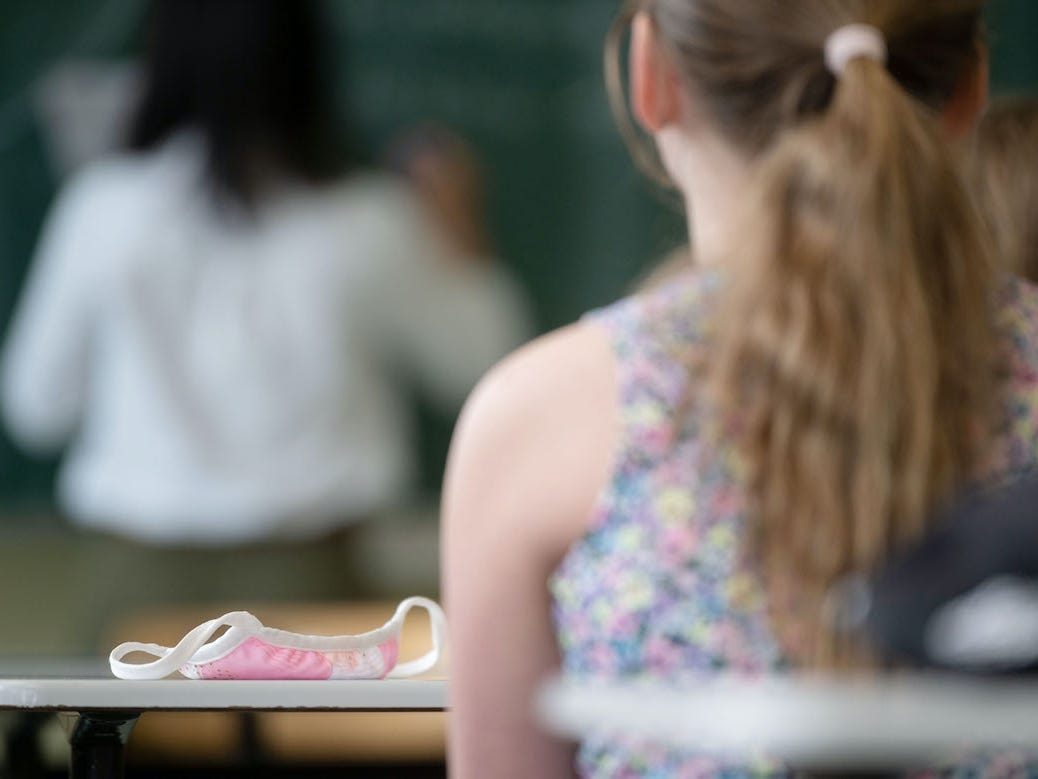- Schools across Germany are taking different approaches when it comes to reopening safely.
- Some German states and cities, such as Berlin, have made masks optional in the classrooms, while other schools have self-administered coronavirus testing.
- Germany’s approach to reopenings seems to be working so far, but officials are wary that the return to schools may contribute to increased coronavirus cases.
- Visit Insider’s homepage for more stories.
In Berlin, Germany, students happily arrived at school for the first time in months with backpacks, school supplies, and masks in tow.
Although they entered the school and walked through hallways wearing their masks, the moment they stepped inside their classroom, their mask could come off.
This practice goes against the advice from both the World Health Organization and the Robert Koch Institute, which is Germany’s federal disease control agency. Both organizations urge teachers and students to keep their masks on inside classrooms.
In Germany, schools are controlled on a state level, which allows for different approaches when it comes to reopening. The most common practices include staggered class times, optional masks, and self-administered testing.
So far, leaders have regarded the reopenings as successful. Some schools have been open for weeks while others just a few days, but no major outbreaks have occurred, according to The New York Times.
Throughout the pandemic, Germany has been recognized for its efficient response to the coronavirus, which has led to a much lower death rate compared to places like the US, Italy, and Spain. The country's swift closures, widespread testing, and functioning healthcare system have all contributed to its success.
As the school year begins across the country, Germany hopes to have a similarly successful approach to reopening schools.
"It's messy and imperfect and I would have liked to see more precautions, but the main takeaway so far is: It's working," Sandra Ciesek, a virologist at the University Hospital of Frankfurt who signed a statement by leading German virologists supporting the reopenings, told The New York Times.
Government officials have acknowledged that school reopenings will be 'imperfect'

Germany shut down its schools in March, and in the spring, some schools were able to reopen with a hybrid of in-person and online classes.
Come fall, schools are looking to completely reopen for in-person learning, and each state is taking a varied approach.
"My best hope is for coordinated chaos," Tobias Kurth, the director of Charité's Institute for Public Health in Berlin, who has been following the back-to-school plans in the 16 federal states, told The Washington Post. "I'd like to see a clear message for all of Germany."
For example, in Berlin, students have the option to not wear masks. While children and teachers are expected to wear them in hallways and on school grounds, face coverings are optional once they're inside the classroom.
In order to allow for a mask-free environment, Berlin schools had to make significant changes. Classes are kept separate so that outbreaks can be contained. Since each student only interacts with a few dozen other individuals, if someone tested positive, only close classmates would need to quarantine while the rest of the school continued.
Within two weeks of classes, the schools had recorded 49 confirmed cases among teachers and students. As a result, 600 of the city's 366,000 students were required to quarantine, according to The New York Times.
Other schools in the country have implemented self-administered coronavirus testing. Students take a swab test themselves, receive results overnight, and wear a green sticker if they test negative.
Additionally, many schools have increased classroom ventilation, scheduled more frequent cleanings, and urged students to wash their hands regularly.
Germany's approach seems to be working

Some students are nearly a month into the school year, and so far, there haven't been any major outbreaks.
For many schools, the small, separated classes have allowed for the dozens of cases that have surfaced to be contained.
However, this isn't the case across all schools. Earlier this month, two schools in Mecklenburg-Vorpommern, Germany, closed days within reopening after a student and teacher were infected.
As the winter months approach and flu season begins, schools across the world are uncertain if cases will spike and in-person classes will be feasible. Germany has already seen a spike in cases in recent weeks, which has led school officials, principals, and state leaders to create backup plans if schools were to shut down again.
According to ABC News, many of the new cases have been attributed to Germans on vacation. Government officials and leaders are wary that the return to schools may also contribute to increased cases.
"This is worrying, without doubt," Health Minister Jens Spahn told Deutschlandfunk radio. "And it can naturally lead to a new dynamic if we don't all now exercise caution."
If you're a teacher, student, or parent who wants to share their story on what it's like to go back to school right now, get in touch at [email protected].
- Read more:
- Schools in Sicily are considering sawing their desks in half if new single-seat tables don't arrive in time
- A teacher in Wisconsin is building a 12-sided outdoor classroom for her 4th-grade students
- Mayor Bill de Blasio says NYC schools can use empty streets and parks for classrooms as part of a new outdoor learning plan
